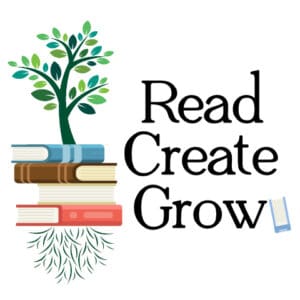What are School Skills?
What is the difference between school skills and early literacy skills, you may ask? Early literacy skills are the skills that children learn prior to kindergarten and generally include print awareness, phonological awareness, numeracy, letter knowledge, narrative skills.
School skills are the other tools your child needs to have in their tool box when entering school. School skills include fine and gross motor movement, the ability to regulate behavior and emotions, social skills, general knowledge, basic math skills that include things like reasoning and problem solving, general knowledge, as well as early literacy skills.
These are skills that begin developing in infancy, that caregivers frequently practice without even realizing. Speaking out loud to your child, reading books together, singing songs, practicing rhymes and counting are all activities that build early literacy skills before your child even attends school.
School skills however, are a broader framework in which to house the early literacy skills your child has been developing since infancy. And while your child may have been building those all this time, some guidance from you can build that foundation bigger and stronger, making their experiences in school that much more productive, effective, and fun.
Fine Motor Skills
Fine motor skills are the small movements we make with our fingers. They allow me to type this post, write with a pen or use buttons and zippers. Fine motor skills are developed through precise movement by building up the tiny muscles in our wrists and hands. The movements can be as simple as practicing “Itsy Bitsy Spider” with your child, or even practicing scribbling with crayons.
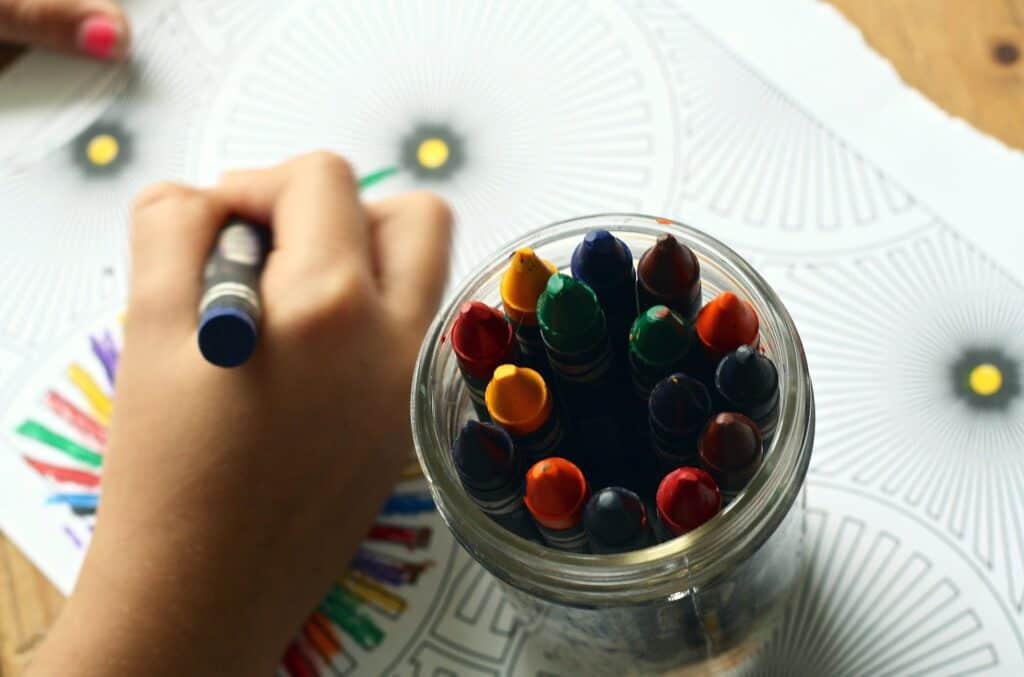
Simply the act of holding something and allowing your child to manipulate it with their fingers will, over time, build up those muscles. Fine motor skills are required to manipulate books and writing instruments like crayons and pencils, making it interconnected with the other literacy skills. Practicing these small movements at home will help your child when they go to school as they will have the muscle strength in their hands already in place to begin to hold crayons, pencils and pens.
Gross Motor Skills
In the way that a fine motor skill works the small muscles in hands and wrists, a gross motor skill involves the larger parts of the body. Large motor skills keep us sitting up right by using our core strength, pick up objects and set them down where we intend for them to go (without flinging them hither and yon), walk, run, and just about everything else!
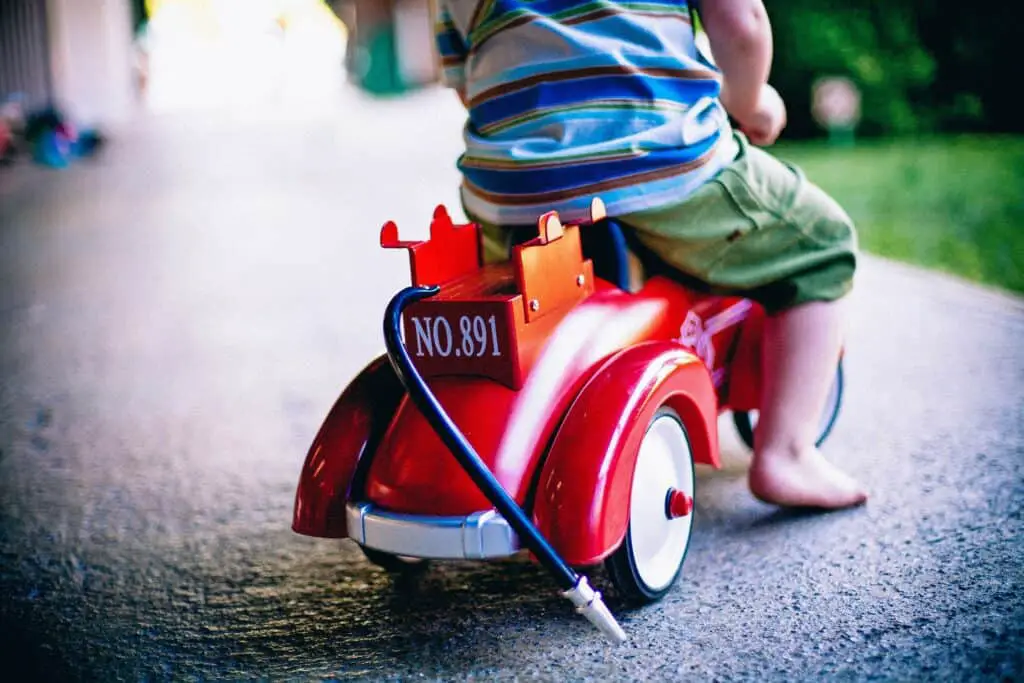
These can be practiced in big ways, like playing sports, or in small ways, like jumping with the rocket ship in “Zoom Zoom Zoom,” or practicing mindful stretching. Being able to control when you do or do not do certain movements is a critical school skill.
Children learn to control both their movements and their behaviors, such as applying those movements in the forms of kicking or hitting, making muscle control of these larger muscles (gross motor skills) part of what they need to know going into kindergarten. Looking for ways to get your wiggly kid reading more? Learn how to read the wiggles out here.
Regulating Emotions and Behavior
No matter how many times you may have thought about flinging a computer or stubborn printer out the window a few deep breaths and maybe a change of scenery generally prevent us from destroying expensive yet maddening equipment at home, and there is a reason for that.
Practicing Self-Regulation Skills
That is because as an adult you can regulate emotions and behavior to appropriate levels. We call this ‘self-regulation,’ which means being able to control your emotions and behaviors to a level that is appropriate to the situation, such as responding correctly to something upsetting, experiencing frustration without an outburst or meltdown or calming oneself down after being upset.
But this is not a skill that anyone is born with, we are taught this through learned behaviors, watching adults around us and societal expectations. In school we are expected to sit in our chairs for a certain amount of time, run only in certain times and places, we do not hit other children (no matter how annoying that other kid is) or throw or break things to vent our frustrations. We use our words to identify and explain how we feel, we practice deep breathing to regulate our bodies, and sometimes we remove ourselves from a frustrating place to calm down.
Since no one is born with the skills to do this, practicing at home will provide your child with a framework for how to respond when frustration, fear, anger or overstimulation strikes at school. Going from a home where you know everyone and everything, to a school environment where everything is designed to keep your brain stimulated (colors, textures, sounds, foods, smells, strangers), is a massive overload for a developing brain.
But you can set your child up for success in school by practicing self-regulation techniques to overcome these issues. Some of this will vary by age, it may be as simple as learning one or two deep breathing exercises and teaching your child that when they feel a certain way it is ok to stop and take a deep breath, then practice with them. When you see your child starting to experience a strong or overwhelming emotion, take a moment to practice the breathing with them a few times.
Vocabulary for Emotional Regulation
Build vocabulary into emotional awareness by creating a list of emotions, use images or words depending on your child’s age. Sometimes it is hard to identify a feeling, seeing it on a page can help them identify the feeling and create an association from “when my body feels like this, then I am feeling ____” which has the added bonus of developing vocabulary as well as identifying emotions.
Something that might seem so obvious to an adult, may not be to a child, so tell your child what behavior expected, ask them to repeat it back to you, do this a few times before a new activity. Be sure to make the instructions simple though with only one or two required behaviors if your child is young. For example, “When we go to the movies we speak in a quiet voice, can we practice our quiet voices?” Then, on the way to the theater, ask your child if they remember the kind of voice they should use inside, and practice again.
This can be applied to any situation such as the way we share, pet the cat or greet our neighbors. Be sure to praise your child too when they have followed your directions.
Social Skills
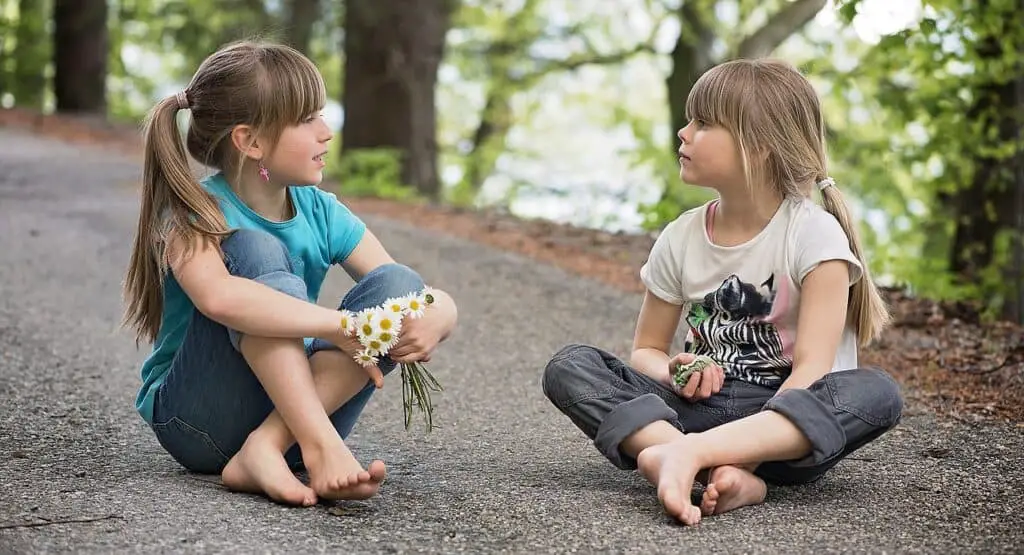
Social skills can be tricky for everyone. There are a few more obvious ones that most people likely recall learning, such as saying ‘please’ and ‘thank you.’ Maybe you learned how to shake hands from an adult in your life before going on interviews, or how to ask a person on a date, but so much of our social skills are picked up from observing what everyone else around us is doing.
There are skills you are likely practicing with your child without even realizing it. Here are a few, beyond ‘please’ and ‘thank you’ that are easy to practice at home. Something you may be working on in today’s world of germs is to sneeze into your elbow and saying ‘excuse me,’ and practice washing hands. It can be tedious but make a game out if it, practice washing your hands with your child, (using soap!) and singing Happy Birthday, or part of another favorite song to know how long they should be washing their hands.
A school’s prodigious use of standing in line can be hard for a little one who doesn’t have to stand in line at home. So practice that! We have all stood in a line somewhere (a store, the post office, Disneyland) and watched someone ‘cut the line’ and our inner ten-year-old said “Hey! That’s not fair!” because we understand that we have to stand in line and wait our turn. But because we, as adults, have some level of self-regulation we probably just grumbled to ourselves about it rather than going and yelling at that person.
It might be strange at first, but you can practice waiting in line at home. Put some painter’s tape on the ground and practice having everyone wait their turn on the line before getting a snack, or have everyone line up before going outside. This could be an entirely new experience for your child, especially if they have spent the last year learning remotely. Giving them a little practice at home will help them recognize the task at school and ease some of the anxiety that comes with learning new tasks in a new environment.
Math Skills
Math skills, or numeracy is a term that covers a lot of ground, you may see it elsewhere as ‘basic math skills.’ Not only does it include recognizing numbers and understanding what that means, it also includes sequencing (putting things in order), recognizing amounts of things without having to count each item, patterns and being able to add and subtract an object from a group of things.
Finger plays and rhymes are easy games to play with small children that involve counting using their fingers or toes. You can, of course, also count objects aloud with your child. Lesser-known math skills might include asking your child what is similar or different about a group of objects, or asking your child to arrange them by size, shape or any number of other criteria.

There is a difference between “math” and “numeracy,” in that math is the actual numbers and data, though we usually use the word to mean calculating that information, not just the information itself. “Numeracy” has to do with understanding what the numbers mean in the real world and being able to apply that math data to a real world situation. Read more about it in this post: Numeracy and Math Skills.
Having numeracy skills, or math skills as we generally refer to it here, will give your child the tools to do all sorts of things. Did you know that math is actually everywhere? Math is not just numbers on a page, there are so many activities that fall into the category of “math skills.”
Patterns and Sequencing as Math Skills
Can you double a recipe? Math. Can you knit? Math. Can you calculate the price of something that is on sale? Math. Can you calculate a tip at a restaurant? Math. Can you organize something by shape or color? Math. Can you see if an object will fit into a certain space? Math. Can you do a jigsaw puzzle? Yep, that’s math. But how you may ask, half that list doesn’t have numbers in it!
Recognizing patterns, sequencing, predicting what comes next, telling time, categorizing and recognizing shape, are all math skills! When your baby puts those geometric shapes into the matching hole in the top of the bin, that is developing a math skill.
When you ask your preschooler to clean up by putting all the blue things away and then all the red things, not only are you making a game of cleaning up, you are developing math skills by practicing categorization. Organizing stuffed animals or toys by color, size or type are all forms of categorization which is a foundational math skill. Later that will come as recognizing these kinds of numbers are odd, even, prime, squared, etc.
Sequencing is a skill that we use daily and may not even realize it. Did you plan the things you wanted to do today? Was there an order for a particular reason? Then you practiced sequencing. Baking and cooking both use several types of math skills as well as scientific thinking.
When you bake something, the ingredients are added in a particular order (sequencing) for a reason. If you bake a cake and add the eggs to the flour rather than combining the butter and sugar and then adding the eggs, you will probably not end up with a cake. Things go in a certain order for a reason, we tend to do this innately but you can explain to your child that you do things in a certain order sometimes and why.
Narrative Skills as Math Skills
Narrative skills are also a form of sequencing. The story has a beginning, middle and end, and if you do not tell it in that order the story does not work. This is something you can practice with your child at home.
Just try narrating what you are doing in your day-to-day routine in short sentences, for example when cleaning up, “First we put the blue blocks in the bin, then we put the green blocks in, then we put the bin on the shelf.” Narrative skills are a math skill and also fall under early literacy skills, read more about developing narrative skills in this post: Practicing Narrative Skills At Home.
Literacy Skills
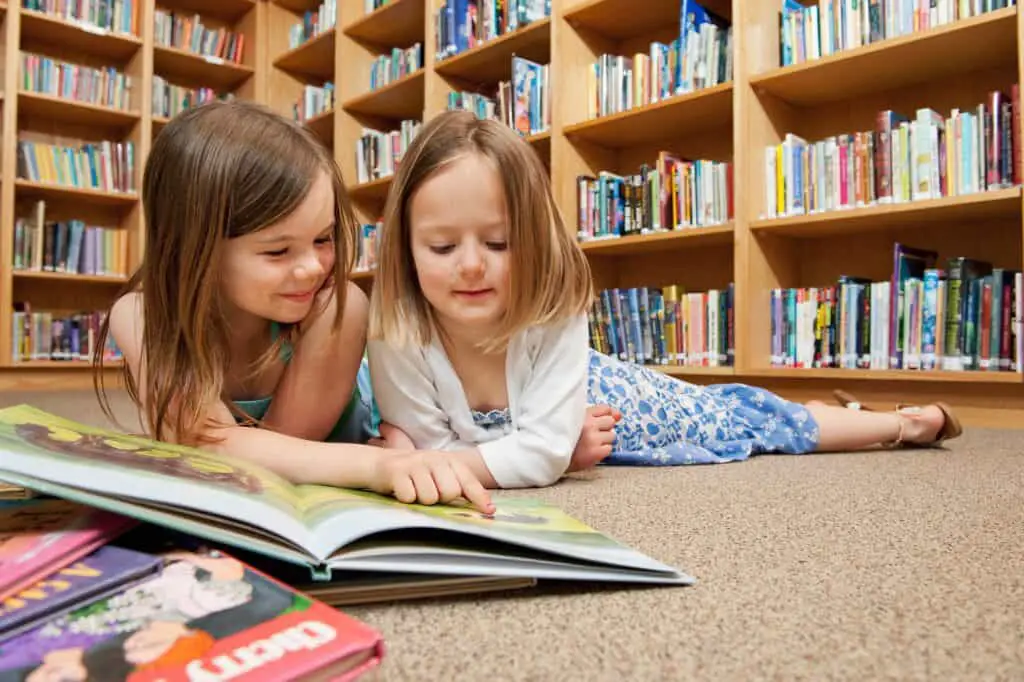
There are six early literacy skills. They are: print awareness, print motivation, letter knowledge, phonological awareness, narrative skills and vocabulary.
These are the foundational skills your child is always learning, and has been learning since infancy. Developing these skills before kindergarten will help give your child a foundation on which to build lessons learned in school.
Go in depth on what each of these skills are and how to build on them at home in this post: How Can I Build Early Literacy Skills at Home?
General Knowledge

Think about the things you know just because you know them. There are probably many facts and other things you know but have no idea how you came to know them, you just do. It might be things about the way the natural world works or some fact you picked up. This is called ‘general knowledge’ and it is the framework you build off when you learn new information and gives you a place to build from and store new information.
General knowledge comes in many forms besides formal education and there are many ways to teach your child. Babies and toddlers learn about the world from the songs we sing with them. For example, the oft-used “Itsy Bitsy Spider” actually explains to a baby that rain is wet and it makes everything wet but then the sun dries the rain. It seems so simple to an adult, but imagine if you had never experienced the rain, you would have no idea that the rain is what made the ground wet, or how it got dry again!
Cooking is another way to help teach your child about the world around you. Start with something simple, stirring these two things together mixes them up so they are now combined. That is a thing your young child may not have known. It can be as simple as explaining the steps of what you are doing.
Playing with paint is another great way to teach general knowledge. When we mix yellow and blue together we get green, are there other ways of getting green? Mix different paints to find out that the only way to get green is by mixing yellow and blue.
The world is new to your child, and full of fun and interesting things to know, so many of which we take for granted as they are obvious to us. You can find new joy in the world by experiencing all the things we know already through the eyes of your child, who finds everything new and wondrous.
Your child is absorbing information around them at an exponential rate, taking a little extra time to talk to your child during the day, explain the things you are doing and making games out of every day activities is thoughtful way to actively construct your child’s school skills and prepare them for their time in school, regardless of age or grade. Take an in depth look at building a better framework for your child’s education in this post about Building General Knowledge.
*This is, of course, a general guide and is not meant to diagnose. If you have concerns about your child’s behavior or development please be sure to speak with a medical professional, your child’s physician or teacher.
